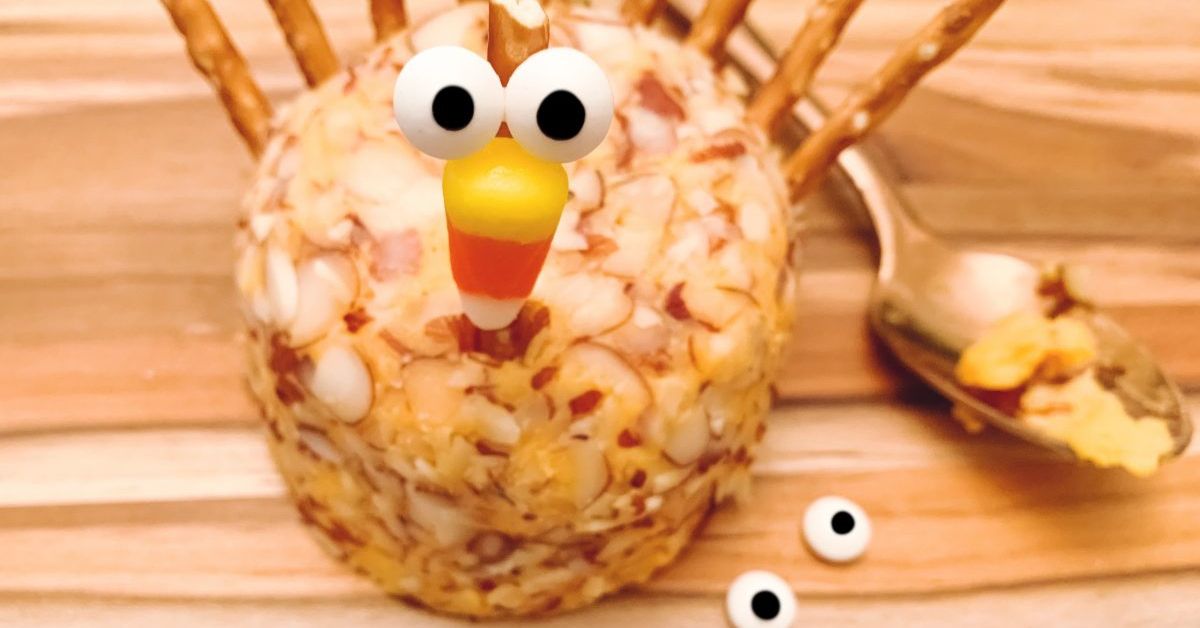Why Is the Turkey Cheese Ball the Perfect Party Starter?
Imagine a creamy, savory cheese ball shaped like an adorable turkey, complete with pretzel feathers and a cute edible face. It’s not just delicious—it’s a showstopper! Turkey cheese balls have become a must-have at holiday gatherings, game-day parties, and even casual get-togethers.
But what makes them so irresistible? Is it the rich blend of cream cheese, cheddar, and spices? The fun, festive presentation? Or the fact that they’re incredibly easy to make?
In this guide, you’ll learn:
✅ How to make the best turkey cheese ball (with expert tips)
✅ Creative variations to wow your guests
✅ Step-by-step shaping and decorating tricks
✅ Make-ahead and storage hacks
Let’s dive in!
What Is a Turkey Cheese Ball?
A turkey cheese ball is a festive twist on the classic cheese ball appetizer. Instead of a plain round shape, it’s molded to resemble a turkey, often decorated with crackers, pretzels, nuts, or veggies for feathers, eyes, and a beak.
Why You’ll Love It
✔ Easy to customize – Use your favorite cheeses and toppings.
✔ Great for holidays – Perfect for Thanksgiving, Christmas, or Friendsgiving.
✔ Kid-friendly – A fun project for little helpers.
✔ Crowd-pleaser – Always disappears fast at parties!
How to Make the Best Turkey Cheese Ball (Step-by-Step)
Ingredients You’ll Need
-
16 oz cream cheese (softened)
-
1 ½ cups sharp cheddar cheese (shredded)
-
½ tsp garlic powder
-
½ tsp onion powder
-
½ tsp smoked paprika
-
¼ tsp black pepper
-
1 cup pecans or almonds (finely chopped, for coating)
-
Decorations: Pretzel sticks, crackers, baby carrots, olives, or peppercorns
Step 1: Mix the Cheese Base
-
In a large bowl, beat the cream cheese until smooth.
-
Add shredded cheddar, garlic powder, onion powder, smoked paprika, and black pepper. Mix well.
-
Cover and refrigerate for 30 minutes to firm up.
Pro Tip: For extra flavor, add crumbled bacon, dried cranberries, or a splash of hot sauce!
Step 2: Shape the Turkey
-
Divide the mixture into two parts: one large (for the body) and one small (for the head).
-
Roll the larger portion into a ball, then slightly flatten the bottom so it sits upright.
-
Roll the smaller portion into a ball for the head and attach it to the body.
Step 3: Coat & Decorate
-
Roll the entire cheese ball in chopped nuts for a “feathered” look.
-
Insert pretzel sticks or crackers at an angle to create tail feathers.
-
Use olives or peppercorns for eyes and a baby carrot or bell pepper for the beak.
Pro Decorating Tip: Use different-colored crackers (like multigrain or veggie chips) for a vibrant tail!
5 Creative Variations to Try
1. Buffalo Turkey Cheese Ball
-
Add ½ cup hot sauce and ½ cup crumbled blue cheese for a spicy kick.
-
Coat in crushed pretzels for extra crunch.
2. Cranberry-Pecan Turkey
-
Mix in ½ cup dried cranberries for a sweet-tart flavor.
-
Roll in chopped pecans for a festive touch.
3. Ranch & Bacon Turkey
-
Stir in 1 tbsp ranch seasoning and ½ cup cooked bacon bits.
-
Coat with crushed crackers for extra savory goodness.
4. Dessert Turkey Cheese Ball
-
Use 8 oz cream cheese + ½ cup powdered sugar + 1 tsp vanilla.
-
Roll in crushed graham crackers or sprinkles for a sweet twist.
5. Vegan Turkey Cheese Ball
-
Substitute vegan cream cheese & dairy-free cheddar.
-
Coat in sunflower seeds or crushed nuts.
Expert Tips for the Perfect Cheese Ball
✔ Use room-temperature cream cheese – Ensures a smooth, lump-free texture.
✔ Chill before shaping – Makes it easier to mold.
✔ Get creative with decorations – Use veggies, crackers, or even edible candy eyes.
✔ Make ahead – Prep up to 2 days in advance (store wrapped in plastic).
FAQs About Turkey Cheese Balls
Can I Freeze a Cheese Ball?
Yes! Wrap tightly in plastic and freeze for up to 1 month. Thaw in the fridge before serving.
What Can I Serve With It?
-
Crackers
-
Sliced baguette
-
Veggie sticks
-
Pita chips
How Long Does It Last?
Up to 5 days refrigerated (if it lasts that long!).
Final Thoughts: Your New Go-To Party Appetizer
A turkey cheese ball isn’t just food—it’s an edible centerpiece that sparks joy and conversation. Whether you stick to the classic recipe or try a bold variation, this appetizer is guaranteed to impress.
Ready to make your own? Gather your ingredients, follow these simple steps, and watch your guests gobble it up (pun intended)!










